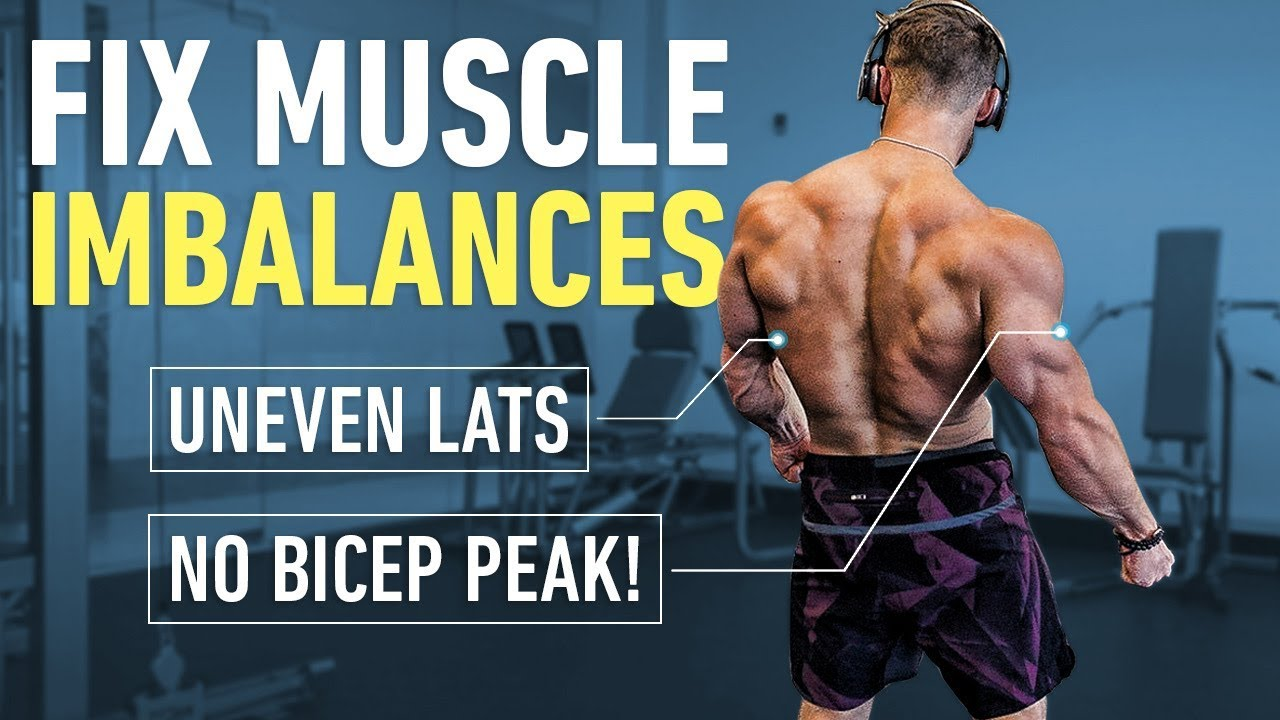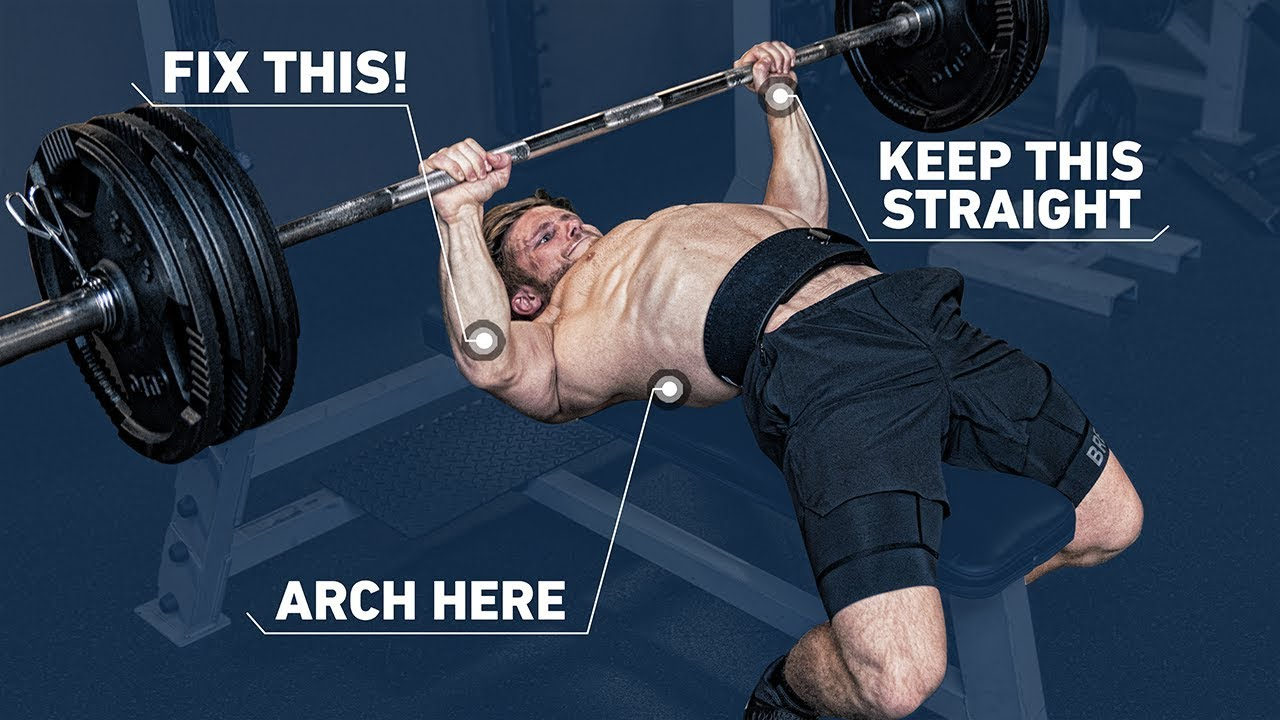In my two decades as a nutrition expert and bodybuilding coach, I’ve guided countless individuals through the intricacies of physique transformation. While the journey involves pushing boundaries and achieving new personal bests, one recurring challenge often surfaces: muscle imbalances. Whether it’s a slightly larger bicep, a more dominant lat, or an uneven quad, these asymmetries can be a source of frustration. Today, I’m going to share my top, battle-tested strategies to address and correct these common discrepancies, allowing you to build a more symmetrical and aesthetically balanced physique.
It’s important to preface this by saying: you are likely your own harshest critic. Most people perceive their muscle imbalances to be far more pronounced than they actually are. As a coach, I’ve often had clients point out perceived “major” asymmetries that are barely discernible even to a trained eye. Furthermore, some variations in muscle shape or insertion points are simply genetic; your left lat might naturally insert lower than your right, and there’s nothing you can do to alter your genetic blueprint. What you can control, however, is maximizing the strength and size of each side as equally as possible. My tips focus squarely on these actionable elements.

Strategy 1: Cultivating the Mind-Muscle Connection on Your Weaker Side
From my perspective, many left-to-right discrepancies stem from neurological factors. Our brains have stronger, more efficient connections to our dominant side, leading to better motor unit recruitment and stronger contractions. Try it yourself: flex your dominant bicep as hard as you can, then try with your non-dominant arm. You’ll likely notice a more powerful, crisper contraction on your dominant side. The same applies to my own physique; my left arm is slightly larger, and I can elicit a much stronger contraction there. Conversely, my right quad demonstrates better detail when posing, purely due to a superior neural connection.
Improving this mind-muscle connection, especially on your weaker side, is paramount. Here are two effective techniques:
- Conscious Intra-Set Focus: During bilateral exercises (movements involving both sides simultaneously, like lat pulldowns), actively direct your focus to your weaker side. As fatigue sets in towards the end of a set, consciously emphasize pulling with that less dominant muscle. A simple mental cue, like silently repeating “left side, left side, left side” if your left is weaker, can help reinforce this focus and ensure more equitable effort from both limbs.
- Targeted Pre-Activation: This technique, while not a formal scientific term, has strong empirical support. It involves performing an isolation exercise for your weaker side immediately before your main compound lift. Think of it as “waking up” those motor units. Research, for instance, has shown that pre-activating the glutes with isolation work can improve their activation during squats. The same principle applies to other muscle groups.
- For Lats: Before heavy lat pulldowns or rows, perform a few light sets of single-arm lat pulldowns or single-arm pullovers, exclusively focusing on your weaker side.
- For Biceps: Before barbell curls, try a 10-second isometric hold of a flexed position with your weaker arm, really concentrating on a peak contraction. Follow this with a brief stretch, then proceed to your main sets. You’ll often feel increased blood flow and a heightened connection to that bicep.
- For Pecs: Prior to bench pressing, perform unilateral cable flies or press against a sturdy object with your weaker pec for 10 seconds. This primes the muscle for better activation during your compound movements.
By integrating these techniques, you’re actively training your nervous system to engage your weaker side more effectively, leading to more balanced recruitment during your main lifts.
Strategy 2: Embracing Unilateral Movements
A significant oversight in many highly minimalistic training programs (those focused solely on a handful of bilateral compound lifts like squats, deadlifts, presses, rows, and pull-ups) is the lack of opportunity to address left-to-right discrepancies. If your movement pattern has an inherent asymmetry – perhaps one elbow tucks more during a bench press – these patterns become further ingrained with repeated bilateral training.
To counteract this, it’s crucial to integrate unilateral (single-limb) movements into your routine.
- Instead of exclusively barbell presses, incorporate dumbbell presses (bench or overhead).
- For your back, utilize single-arm lat pulldowns or dumbbell rows.
- For biceps, swap some barbell curls for dumbbell curls.
These exercises force each side to work independently, preventing the stronger limb from compensating for the weaker one. This allows you to specifically target and strengthen the lagging side.

For individuals with pronounced asymmetries or deeply ingrained movement pattern issues, I recommend a progressive approach: unilateral-to-iso-lateral-to-bilateral. Take the pulldown as an example:
- Unilateral First: Start by performing single-arm pulldowns, focusing entirely on your weaker side first, then matching the reps with your stronger side.
- Iso-Lateral Transition: Next, move to an iso-lateral machine (where both handles move independently, even if you’re using both arms simultaneously). This still forces individual activation but allows for coordinated movement.
- Bilateral Integration: Finally, reintroduce the traditional bilateral pulldown. By pre-programming both sides to fire equally through the preceding steps, you minimize the risk of the dominant side taking over. This serves as both a preventative and corrective strategy for restoring symmetry.
Strategy 3: Leverage Technology and External Feedback
We often have blind spots when it comes to our own movement patterns. Trying to self-assess form in a mirror during a lift, especially a complex one, is often inefficient and can even compromise your head and neck position.
This is where filming your sets or enlisting the help of a knowledgeable training partner or coach becomes invaluable.
- A side view in a mirror might not reveal that one elbow is tracking faster or flaring out more than the other during a lat pulldown.
- Reviewing footage allows you to objectively analyze your form from multiple angles, spotting subtle asymmetries you’d never notice otherwise. I’ve personally gained immense insights into my own lifting mechanics by reviewing my training footage.
Once you’ve identified a specific asymmetry (e.g., one elbow drifting forward on a hammer curl, or a tilted barbell during a press), the next step is to diagnose its root cause. In my experience, it usually boils down to one of two issues:
- Mobility Limitations: If one side has restricted range of motion – for example, if one scapula can’t retract as far – this is a mobility problem. Address it with targeted mobility drills, specific exercises, or by consulting a qualified movement specialist.
- Ingrained Movement Patterns: Sometimes, an asymmetry develops simply because you’ve repeatedly performed an exercise with a subtle, inefficient pattern over time. What might have started as a slight deviation can become deeply ingrained. In such cases, a complete reprogramming of the movement is necessary.
To reprogram effectively:
- Check Your Ego and Strip the Weight Back: This is non-negotiable. You cannot relearn a movement with heavy loads.
- Focus on Slow Eccentrics: Mastering the lowering (eccentric) phase of a lift with light weights and deliberate control can significantly correct asymmetries by forcing precise limb positioning.
- Reapply Unilateral Progression: As mentioned in Tip 2, re-starting with unilateral work, progressing to iso-lateral, and then back to bilateral can effectively re-establish symmetrical movement patterns.
Bonus Tip: Targeted Volume for the Lagging Side
Once you’ve implemented the above strategies to improve connection and correct movement patterns, a final, often obvious, but effective tactic is to add targeted volume to your weaker side.
At the end of your pull workout, arm workout, or any relevant session, perform 1-3 extra sets exclusively for your lagging muscle group. For example, if your right arm is smaller, you might add a couple of sets of dumbbell curls specifically for that arm.

Crucial considerations for this bonus volume:
- Limit the Extra Sets: Don’t add more than 3 extra sets. Overdoing it can not only reverse the imbalance (making the previously weaker side now dominant) but also lead to excessive fatigue that could negatively impact your recovery and subsequent workouts.
- Perform at Workout End: Always perform these extra sets at the very end of your workout. This ensures that the added fatigue doesn’t compromise your performance or load on your main lifts.
By systematically applying these strategies – enhancing your mind-muscle connection, incorporating unilateral work, diligently monitoring your form, and strategically adding volume to lagging areas – you can effectively address muscle imbalances and carve out a more balanced, powerful, and aesthetically pleasing physique. It’s about smart training, not just hard training.
What specific muscle imbalance are you currently working to correct?



